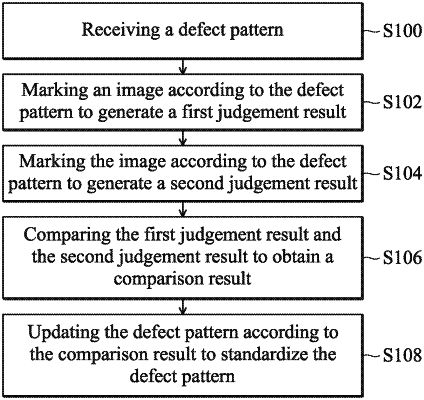| CPC G06F 18/214 (2023.01) [G06F 18/217 (2023.01); G06F 18/40 (2023.01); G06N 3/08 (2013.01); G06T 7/0004 (2013.01); G06T 2200/24 (2013.01); G06T 2207/20081 (2013.01); G06T 2207/20084 (2013.01); G06T 2207/30164 (2013.01)] | 10 Claims |

|
1. A method for standardizing image annotation, comprising:
receiving a defect pattern;
marking an image according to the defect pattern to generate a first judgement result;
marking the image according to the defect pattern to generate a second judgement result;
comparing the first judgement result and the second judgement result to obtain a comparison result; and
updating the defect pattern according to the comparison result to standardize the defect pattern, so that the second judgement result is approached to be the same as the first judgement result;
receiving a first audit result and a second audit result at different time points; wherein the first audit result and the second audit result record a number of defective images or non-defective images comprised in the same group of images at different time points; and
determining a marking result is qualified when a ratio of the difference between the first audit result and the second audit result is less than a first threshold, wherein the ratio of the difference is a moving rate;
wherein generating the second judgement result comprises:
generating an image recognition algorithm, which is trained using the image as training data; and
determining whether the image is a defective image by using the image recognition algorithm to obtain the second judgement result;
wherein the defect pattern is updated according to the comparison result to improve the accuracy of the image recognition algorithm.
|